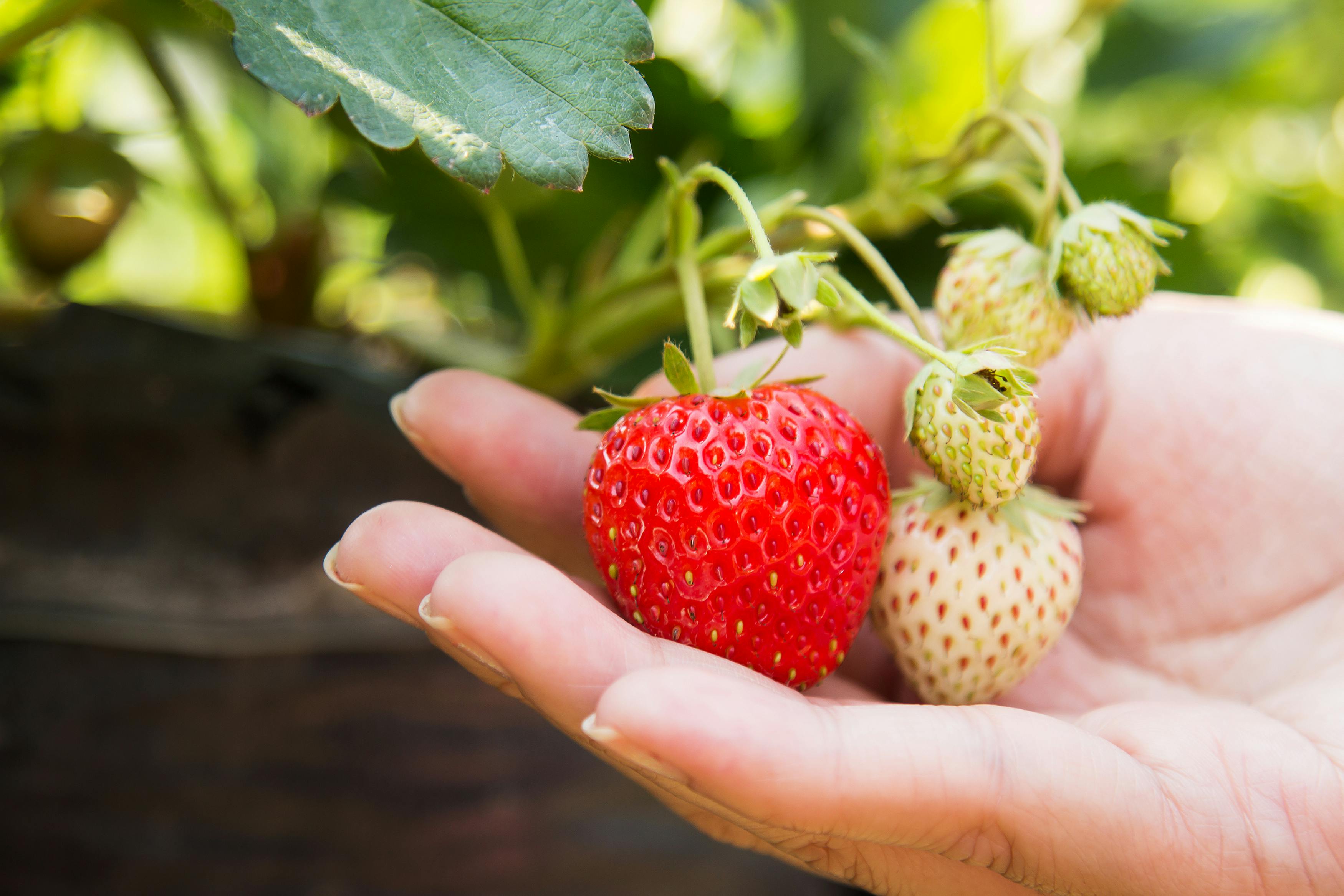Strawberries are a delicious and nutritious fruit that can easily be grown in Arizona. With the right amount of sun, soil, and water, anyone can successfully cultivate strawberries in the state. This guide will provide you with all of the tips and tricks you need to know to successfully grow strawberries in Arizona.In Arizona, strawberries can be grown successfully as long as they are planted in well-draining soil and in an area that receives full sun. To get started, purchase strawberry plants from a local nursery or garden center. Plant the strawberry plants in the late winter or early spring when temperatures reach above 45 degrees Fahrenheit. Make sure to space the plants 12 to 18 inches apart and to bury the crown of the plant slightly below the soil line, leaving only a few leaves visible at the top. Water regularly and add mulch around each plant to conserve moisture. Fertilize with a balanced fertilizer every 3 weeks during fruiting season. If needed, use a shade cloth to protect your strawberry plants from the hot summer sun. Finally, harvest your strawberries when they are fully ripe for maximum sweetness!
Choosing the Right Soil
When it comes to gardening, one of the most important elements is choosing the right soil. The type of soil you choose can have a huge impact on how successful your plants will be, as different plants require different types of soil. It’s important to understand the different types of soil available and how to identify them so that you can choose the best option for your garden.
The first thing to consider when choosing soil is its texture. Soil texture refers to the size of particles that make up the soil, and can vary from very fine (e.g., clay) to very coarse (e.g., sand). Depending on your plants’ needs, you may need a mix of textures or just one type. For example, some plants prefer a light and airy soil with plenty of sand while others thrive in heavier soils with more clay.
The next factor to consider is the pH level of the soil. Soil pH measures how acidic or alkaline it is, and different plants have different preferences for this measure as well. A neutral pH level (around 7) is usually ideal for most plants, but some prefer slightly acidic soils (around 6) or slightly alkaline soils (around 8). You can test your soil’s pH level with a home testing kit or by sending a sample off to a lab.
Finally, you should also consider what kind of nutrients are present in the soil. Different types of soil contain varying levels of key nutrients such as nitrogen, phosphorus and potassium that are essential for plant growth. If these nutrients are not present in adequate amounts, then you may need to supplement them with fertilizer or other amendments.
In conclusion, choosing the right soil for your garden is essential for ensuring that your plants will thrive and reach their full potential. It’s important to consider factors such as texture, pH level and nutrient content when selecting the right type of soil for your needs. With careful consideration and research, you can select an ideal option for your garden that will ensure healthy growth for years to come!
Preparing the Garden Bed
Creating a healthy garden bed begins with proper preparation. The ground must be cleared of weeds, stones, and debris before planting. To ensure the soil is healthy, it should be amended with organic matter such as compost, manure, or peat moss. This will help improve drainage and aeration while increasing nutrients in the soil.
It’s also important to test the pH level of the soil before planting. This can be done easily at home with a soil test kit. If the pH is not within an acceptable range (6-7 for most plants), amendments such as lime or sulfur can be added to adjust it. Once all of these steps have been completed, you’re ready to add plants and start gardening!
Planting Strawberries in Az
Growing strawberries in Arizona is a great way to enjoy delicious, sweet treats year-round. Strawberries are easy to grow and require minimal maintenance, making them a great choice for beginner gardeners. With a few simple tips, you can have your own thriving strawberry patch in no time!
When planting strawberries in Arizona, the best time to get started is in the late winter or early spring. This will give the plants plenty of time to establish themselves before the hot summer months arrive. Start by preparing your soil. Strawberries prefer well-drained soil that has been amended with compost or aged manure. If you have clay-like soil, consider adding some sand to improve drainage.
Once your soil is ready, it’s time to plant your strawberry plants. Plant each one about 18 inches apart and make sure they’re at least two feet away from other plants. Water them deeply after planting and keep the soil moist but not soggy. Mulching around the plants will help keep moisture in and weeds out.
Fertilizing your strawberry plants is important for healthy growth and abundant harvests. Use an organic fertilizer such as compost tea or fish emulsion every 4–6 weeks during the growing season. Don’t forget to water after fertilizing so the nutrients can be absorbed by the roots.
Finally, don’t forget about pest control. Keep an eye out for common pests such as slugs, aphids, and spider mites. Handpicking pests off of your plants is usually enough to keep them under control but if necessary you can also use pesticide sprays that are labeled as safe for edible crops.
With just a bit of care and attention, you can enjoy fresh strawberries from your own backyard for years to come!
Strawberry Plant Sunlight Requirements
Strawberry plants require plenty of sunlight for healthy growth and fruit production. The amount of sunlight needed depends on the type of strawberry plant and the climate in which it is grown. Generally, strawberry plants need at least 6 hours of direct sun each day in order to produce a good crop of fruit. In cooler climates, the plants may need more light to reach their full potential.
In areas with intense summer heat, shade may be necessary during certain times of the day to protect the plants from sunburn or wilting in the heat. It is important to ensure that there is enough air circulation around the plants so that they can receive adequate amounts of air and light.
If available, southern exposure is ideal for maximum sunlight and warmth for strawberry plants during winter months. During periods when temperatures are expected to drop below freezing, it is important to cover strawberry plants with a tarp or other protective covering to prevent frost damage.
It is important to pay attention to the overall health and vigor of your strawberry plants throughout their growing season. Healthy plants will produce more fruit than those that are stressed or lack adequate sunlight. By providing your plants with enough light and keeping them protected from extreme temperatures, you can maximize their yields and enjoy a successful harvest!

Water Requirements for Strawberry Plants
Strawberry plants require a significant amount of water in order to thrive and produce quality fruit. Depending on the variety and climate, the amount of water needed for optimal growth varies. In most cases, strawberry plants should be watered deeply and regularly throughout the growing season. During dry periods, supplemental irrigation may be necessary to ensure that soil moisture levels remain consistent. When watering, it is important to avoid wetting the leaves of the plant as this can encourage fungal growth and reduce yields. When irrigating, take care to water gently and evenly around the base of the plant rather than directly onto the foliage. Additionally, mulching around strawberry plants can help retain moisture in the soil and reduce evaporation from the surface.



